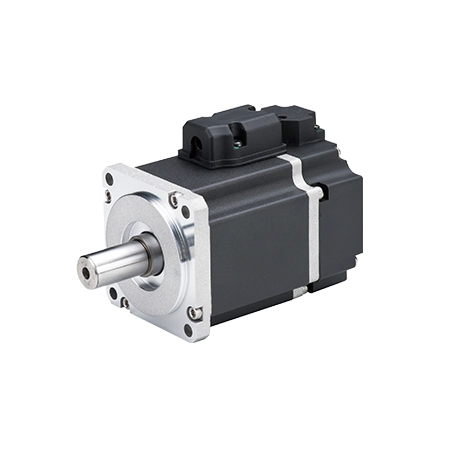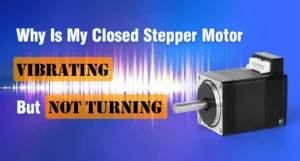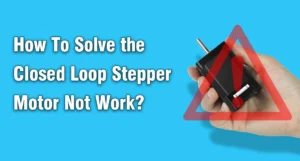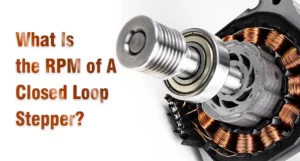In the world of automation and robotics, closed loop stepper motors and servo motors are indispensable components, each with its unique characteristics and applications. Understanding the differences between these two types of motors is crucial for engineers, hobbyists, and industry professionals alike. This article serves as a comprehensive guide, dissecting the nuances between closed loop stepper motors and servo motors, covering everything from internal structure to application scenarios.
What are the main differences between closed loop stepper motors and servo motors?
The primary differences lie in their internal structure, working method, control mechanism, performance characteristics, and cost. While closed loop stepper motors rely on pulse signals and feedback from encoders for positioning, servo motors utilize a closed-loop control system to maintain precise control over position, speed, and torque.
Understanding Internal Structure
Closed Loop Stepper Motors:
Closed loop stepper motors, consist of a rotor with permanent magnets and a stator with coils. Unlike their open-loop counterparts, closed loop steppers incorporate feedback mechanisms, typically encoders, to ensure accurate positioning. This feedback loop enables the motor to detect and correct errors, making closed loop steppers exceptionally reliable in applications demanding high precision.

Servo Motors:
Servo motors comprise a DC motor, a gearbox, and a control system. Unlike stepper motors, servo motors utilize feedback mechanisms such as encoders to precisely control the position, speed, and torque. This closed-loop system ensures accurate motion control.

Working Methods
Closed Loop Stepper Motor:
Closed loop stepper motors operate in a step-by-step manner, moving in discrete increments.
They are well-suited for applications requiring precise positioning at low to moderate speeds.
Servo Motor:
Servo motors provide smooth, continuous motion.
They excel in applications requiring high-speed operation and dynamic response, as they can adjust their speed and torque on the fly.
Deciphering Functionality
Closed loop stepper motors operate based on pulses sent by the control system. The integrated feedback mechanism ensures that the motor precisely follows the commanded position, reducing the risk of step loss and improving overall performance.
Servo motors operate by receiving a control signal that dictates the desired position or speed. The feedback mechanism continuously compares the actual position with the commanded position, making real-time adjustments to ensure accurate motion control.
Analyzing Operating Speed
Closed loop stepper motors are capable of achieving high speeds, although their maximum speed is typically lower compared to servo motors. The closed-loop control system helps mitigate issues such as resonance and step loss, allowing for smoother operation at higher speeds.
Servo motors excel in high-speed applications, offering rapid acceleration and deceleration capabilities. The closed-loop feedback system enables servo motors to maintain consistent speed and accuracy across a wide range of operating conditions. However, they may experience overshooting when transitioning from high speed to low speed or when coming to a static state.
Assessing Torque Frequency Characteristics
Closed loop stepper motors exhibit good torque characteristics at low speeds, making them suitable for applications requiring precise positioning and control. However, torque may decrease at higher speeds due to motor dynamics and control limitations.
Servo motors boast excellent torque characteristics across a wide range of speeds, making them ideal for dynamic and high-performance applications. The closed-loop control system ensures that the motor delivers consistent torque output, even at high speeds.
Evaluating Overload Capacity
Closed loop stepper motors have limited overload capacity, as they rely on open-loop control for torque generation. Exceeding the motor’s rated torque may result in step loss or motor stalling, potentially compromising performance and accuracy.
Servo motors offer high overload capacity, thanks to their closed-loop control system. The control system continuously monitors the motor’s torque output and adjusts accordingly, allowing servo motors to handle sudden load changes without sacrificing performance.
Assessing Noise, Heat, and Vibration
Closed loop stepper motors are known for their low noise and vibration levels, especially at low speeds. However, prolonged operation at high speeds may result in increased heat generation, affecting overall efficiency and performance.
Servo motors produce minimal noise and vibration, even at high speeds, due to their precise control system. Additionally, servo motors generate less heat compared to stepper motors, making them suitable for continuous operation in demanding environments.
Analyzing Debugging Difficulty
Debugging closed loop stepper motors is easy, especially when dealing with issues such as resonance, step loss, or encoder malfunction. Proper tuning of the control parameters and feedback loop is essential to optimize performance.
Servo motors typically demand more complex debugging efforts compared to stepper motors due to their robust closed-loop control system and numerous parameters. Consequently, resolving issues related to feedback devices or control algorithms may necessitate expertise and meticulous attention to detail.
Assessing Control Accuracy
Closed loop stepper motors offer excellent control accuracy, especially in applications requiring precise positioning and repeatability. The feedback mechanism ensures that the motor accurately follows the commanded trajectory, minimizing errors.
Servo motors provide unparalleled control accuracy, making them ideal for applications demanding high precision and dynamic performance. The closed-loop control system enables servo motors to maintain tight control over position, speed, and torque, even in challenging operating conditions.
Evaluating Cost Price
Closed loop stepper motors are generally more affordable compared to servo motors, making them a cost-effective choice for applications where high precision and performance are not critical.
Servo motors tend to be more expensive than stepper motors due to their advanced control system and feedback mechanisms. However, their superior performance and versatility justify the higher upfront cost, especially in demanding applications.
Advantages and Disadvantages
Closed Loop Stepper Motor
Advantages:
- Cost-effective compared to servo motors.
- Simple to operate and control.
- High holding torque at standstill.
Disadvantages:
- Limited top speed and acceleration capabilities.
- Less efficient at high speeds.
Servo Motor
Advantages:
- High torque-to-inertia ratio, providing an excellent dynamic response.
- Superior performance at high speeds and accelerations.
- More efficient than stepper motors at high speeds.
Disadvantages:
- Typically more expensive than stepper motors.
- Complex control systems may require additional programming and tuning.
- Require more sophisticated feedback mechanisms.
Application Scenarios
Closed loop stepper motors are commonly used in applications requiring precise positioning and control, such as 3D printing, CNC machining, and robotic assembly. Their cost-effectiveness and simplicity make them suitable for a wide range of industrial and commercial applications.
Servo motors find applications in industries where high performance, accuracy, and reliability are paramount, such as industrial automation, aerospace, and robotics. Their ability to deliver precise motion control in dynamic environments makes them indispensable in demanding applications.
Conclusion
In conclusion, closed loop stepper motors and servo motors are two distinct types of motors, each with its advantages and limitations. While closed loop stepper motors offer cost-effective solutions for applications requiring moderate precision, servo motors deliver unparalleled performance and accuracy in demanding environments. Understanding the differences between these two motor types is essential for selecting the most suitable option based on specific application requirements.
Whether you’re embarking on a new automation project or seeking to optimize existing systems, choosing the right motor type can significantly impact performance, reliability, and overall efficiency.
FAQs
- Which motor type is better suited for high-speed applications?
Servo motors are better suited for high-speed applications due to their rapid acceleration and deceleration capabilities. The closed-loop control system ensures consistent speed and accuracy across a wide range of operating conditions, making servo motors ideal for dynamic motion control.
- Are closed loop stepper motors more affordable than servo motors?
Yes, closed loop stepper motors are generally more affordable than servo motors. However, servo motors offer superior performance and control accuracy, justifying their higher upfront cost in applications where precision and reliability are critical.
- Can closed loop stepper motors replace servos in all applications?
While closed loop steppers offer cost-effective alternatives in many scenarios, servos remain indispensable for applications demanding unparalleled precision and rapid response times.
- What factors should be considered when choosing between closed loop stepper motors and servo motors?
When choosing between the two motor types, factors such as precision requirements, operating speed, torque characteristics, and budget constraints should be taken into account. Closed loop stepper motors are suitable for cost-sensitive applications that require moderate precision, while servo motors excel in high-performance applications demanding tight control and accuracy.
- How can I optimize the performance of closed loop stepper motors?
To optimize the performance of closed loop stepper motors, ensure proper tuning of the control parameters and feedback loop. Minimize resonance effects, adjust acceleration and deceleration profiles, and regularly calibrate the feedback devices to maintain accuracy and reliability.






